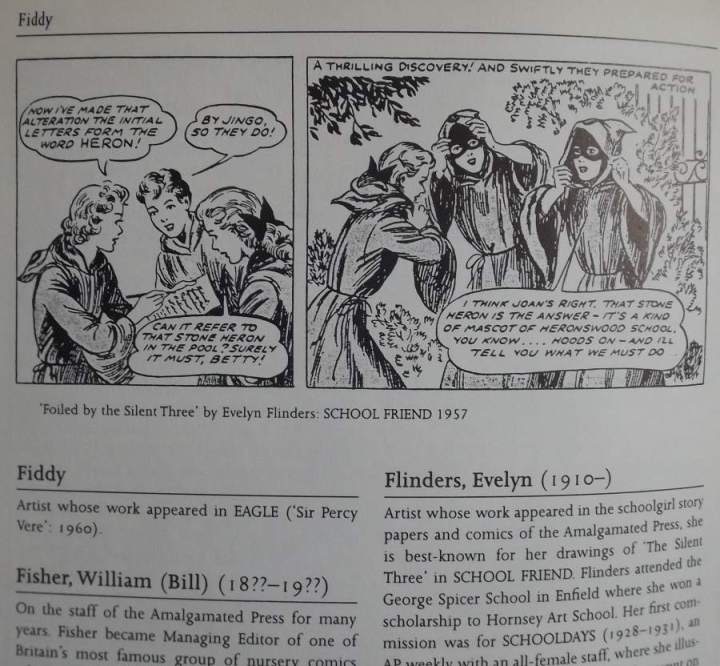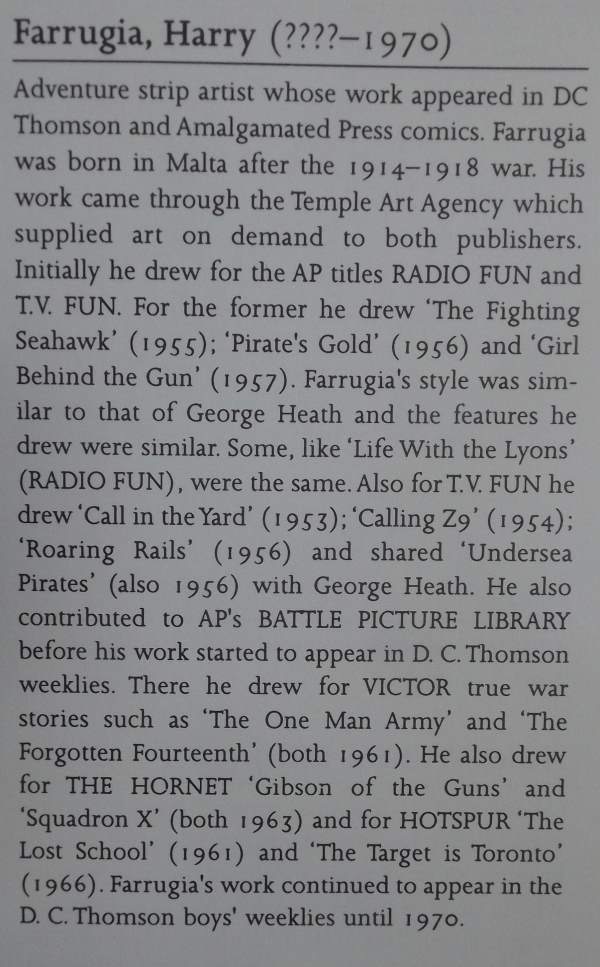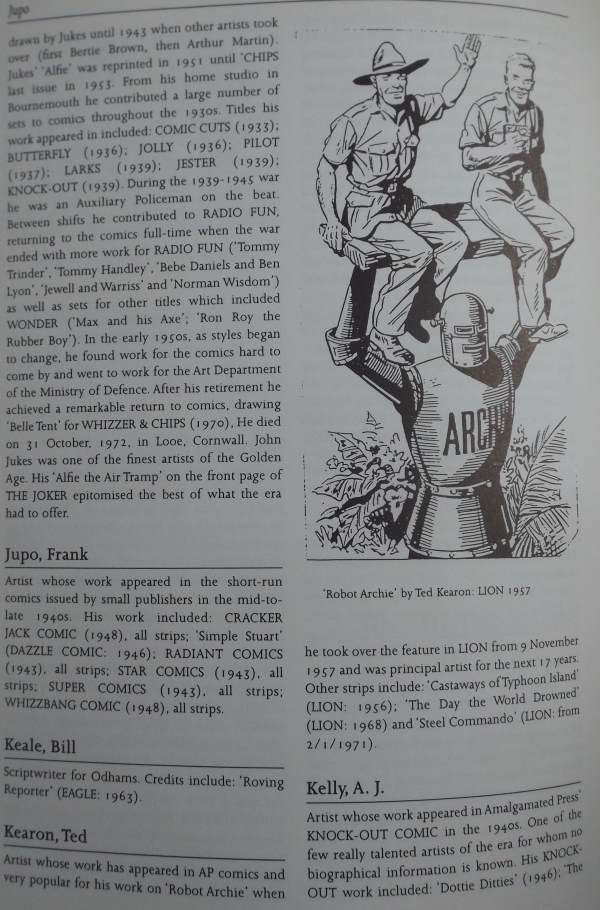By Colin Noble
First Published on Colin’s own site, NothingButaFan, in 2016 and re-published on downthetubes with full permission
In many subjects, you will often hear current researchers talking about “standing on the shoulders of giants” when their latest research is published and lauded.
For me, being a comics fan means that I rely on the work of many that thankfully are still with us and many who have unfortunately passed away. And in this age of the internet, there is so much that is at our fingertips.
So this page is dedicated to the books and websites that I use frequently for information about comics and other geekiness that I enjoy. Hopefully, you’ll consider buying some of the books that I mention.
 Action: The Story of a Violent Comic
Action: The Story of a Violent Comic
by Martin Barker
This is the story of the 1976 Action comic or, if you prefer, the Sevenpenny Nightmare, documented here on downthetubes (the section includes extracts from the book, re-published with the permission of the author).
Action: The Story of a Violent Comic reviews the controversy that surrounded the comic almost from day one and how it tapped into the zeitgeist of the time for many comic reading boys.
The comic was violent, its stories politicised in a way that no mainstream British comic had been before and it was very popular. The book dissects the rise and fall of Action and ponders on how the comic would have fallen if it had not been withdrawn in October 1976.
(Few people remember that if it had not been for Action, 2000AD would not have taken the direction that it did as much of the early years of the Galaxy’s Greatest Comic were overshadowed by the fear that it could be shut down, just like its predecessor).
The book was originally published in 1990 by Titan Books and had a modest but respectable success at the time. Today, people have been latching on to what a goldmine of information this book contains. And as a result, this book that was reasonably priced in 1990 can now fetch quite a high price.
• Search for Action: The Story of a Violent Comic on Amazon.co.uk
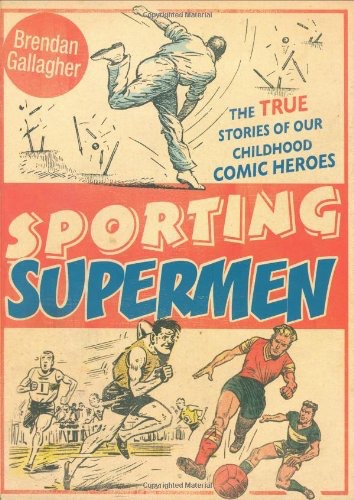 Sporting Supermen: The True Stories of Our Childhood Comic Heroes
Sporting Supermen: The True Stories of Our Childhood Comic Heroes
by Brendan Gallagher
This is a fascinating look at the sporting heroes that have stood the test of time in comics.
The book concentrates on the three biggest names: the Amazing Wilson from the Wizard and illustrated in the Hornet and eventually the Hotspur (but no mention of his appearance in Spike); Alf Tupper from the Rover and then illustrated in the Victor; and Roy Race, the amazing footballer that still gets a mention every so often by sports commentators today! Roy famously featured in Tiger for years until he was given his own comic Roy of the Rovers in 1976.
Brendan gives a mention to many of the other sporting creations, but for me, the gold that he gives me is the name of a writer, Gilbert L Dalton. Gilbert is the writer credited with creating Alf Tupper and The Amazing Wilson. (It is also likely that he created Matt Braddock, the scourge of the Luftwaffe).
It has been claimed that Gilbert was, at one time, writing 50,000 words a week… To give you an idea of how amazing that is, Mort Weisinger, a DC Editor, would allow a maximum of 35 words per panel in a six panel page in a DC comic. I’ll let you folks do the maths to figure out how many pages that 50,000 words works out to. And if you consider that most of Gilbert’s work was published in the word heavy story papers which featured around 1400 words per page, then it becomes even more impressive a feat.
• Search for Sporting Supermen: The True Stories of Our Childhood Comic Heroes on Amazon.co.uk
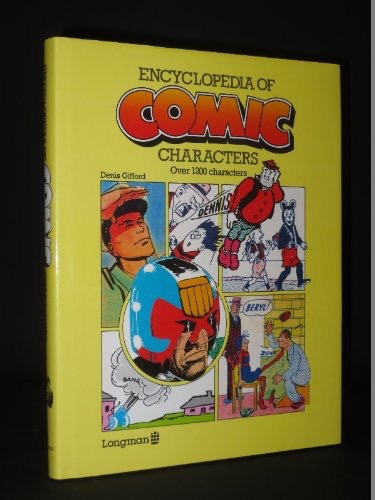 The Encyclopedia of Comic Characters
The Encyclopedia of Comic Characters
by Denis Gifford
No article about comic reference books would be complete without mentioning one of the most prolific and knowledgeable collectors of the 20th Century. Denis’ Encyclopedia is essential for anyone that is serious about knowing their Dan Dare from their Judge Dredd.
Most of the characters featured are from British comics, but there is a smattering of characters from the US and Europe. For me, it is worth it as I was able to spot at least one error, which indicates that I am a tad more knowledgeable about comics than I ever realised. And it was scary how many of the characters I either knew or had a passing knowledge of.
And the bit that still makes me smile is the fact that my copy was an ex-Wiltshire Libraries copy and I bought it for the princely sum of 50 p! A truly serendipitious find.
• Buy The Encyclopedia of Comic Characters from amazon.co.uk
 Encyclopedia of Comic Artists, Writers and Editors
Encyclopedia of Comic Artists, Writers and Editors
By Alan Clark
There are still a lot of reference books out there that I still want to buy and this one took me ten years to track down. It’s a well researched book which features short biographies of such luminaries that are of interest to myself and other fans of British comics.
The reason it took so long for me to acquire this tome was simple economics. The book originally sold for £40 from the British Library in 1997. However, by the time I was aware of the existence of this book in 2005, the internet had exploded into being and was becoming an integral part of our lives. But in those eight short years, the value of the book had rocketed to over £100. In fact, the first copy that I saw was being sold in Canada for the equivalent of £110 and was being used by a learning institute as required reading as part of their course. So I kept looking and hoping for the price to drop to something reasonable.
This year, I had gone looking for another Alan Clark book and I saw this featured for less than the cover price. When I saw that I knew I had to buy it. But there are still copies being sold for three figures sums! However, some are being sold for much more reasonable prices.
The strength of this book is in its coverage of what I consider to be the “Fleetway Funnies”. I know that this term is hopelessly inaccurate but I lump anything by Amalgamated Press, Odhams, Hulton Press and any other company that was not published by DC Thomson into the category of Fleetway.
In my defence, I grew up in the 1970s in the county of Angus, Scotland, where less than 15 per cent of all periodicals sold were not published by DC Thomson, so there were only the two companies that I was aware of that published comics. As I have gotten older (please note that does not necessarily mean the same as grown up…), I have become aware of what went before to create Fleetway. And I am also aware of what has taken the place of Fleetway, but my mind still thinks of them as Fleetway, even though I have emailed that rather nice Matt Smith at Rebellion a time or two.
I also like the fact that this book strengthens my knowledge of the artists, writers and editors that worked in the comics business in the early part of the 20th century. What makes me smile is that I was looking at the Silent Three in my NothingButAFan post about girls’ annuals and here we have a nice bio about Evelyn Flinders, the artist for that strip.
My problem with this book today is that as I have learned more about comics, the more this book has become a bit of a curate’s egg for me. For example I had just completed an article about artist Jim Watson when I got the book, so the first name I turned to was his. Imagine my surprise and chagrin when I found that he was not mentioned.
The next name that I turned to was C D Bagnall, an artist who featured quite often in The Victor. He drew “Feuding Finnegan” and “Cecil: The Stone Age Scrapper”, amongst others. And again, I found that this was someone that had not been mentioned. However, despite his name being spelt wrongly in the text, it was quite nice to find a Mike Western self-portrait, even if it has featured on downthetubes for a while.
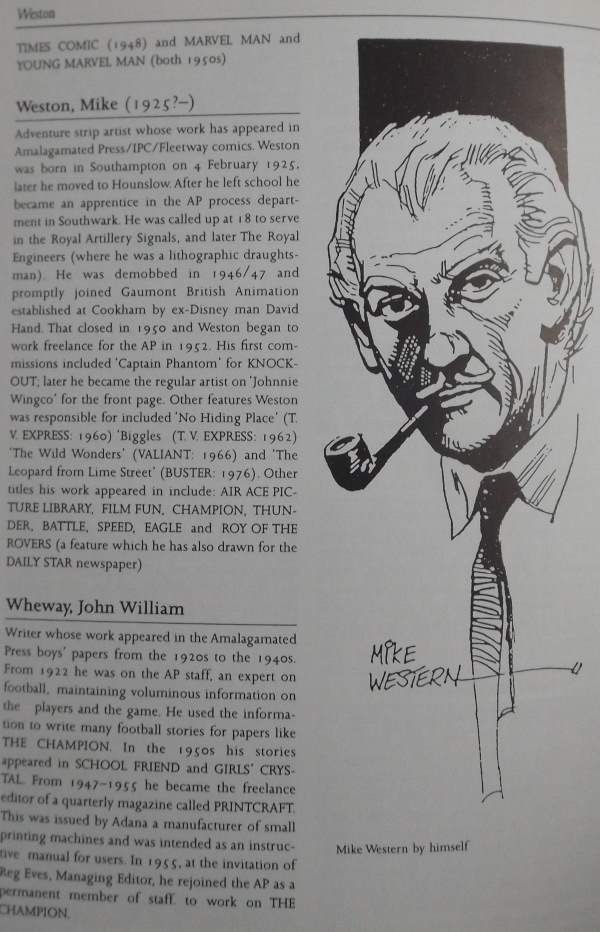
Two of the other names that I looked gave me better results: Ted Kearon, who was responsible for not only “Robot Archie”, but also “Morgyn The Mighty”. The other name is Harry Farrugia, who still remains in my top twenty of artists despite the fact that we lost him in 1970.
I dislike putting out anything negative about anything comic related, so I turned my dissatisfaction about those that were not mentioned in this reference book into a memory game, listing any British contributor to UK comics that was not mentioned in this book. Each contributor had to be British, have something published before 1990 and I was not allowed to go on the internet to add to the list of names that I could come up with.
When I got to over 30 names, I knew that my friends and wife were right in that I know far too much about comics to stay silent about them any more. I hope that I have encouraged a few fans to buy this book while they can get it at a reasonable price.
• Search for the Encyclopedia of Comic Artists, Writers and Editors on amazon.co.uk
 The DC Thomson Bumper Fun Book
The DC Thomson Bumper Fun Book
Edited by Mary Cadogan
This book does not portray DC Thomson’s in the best light but in the absence of any formal history, it is currently the closest thing we have to a history of the company.
And yes, it was in such a very strange format. The only publication that I have seen in the same format is the Giant War Picture Library, published by Fleetway in the 1960s.
• Search for The DC Thomson Bumper Fun Book on amazon.co.uk
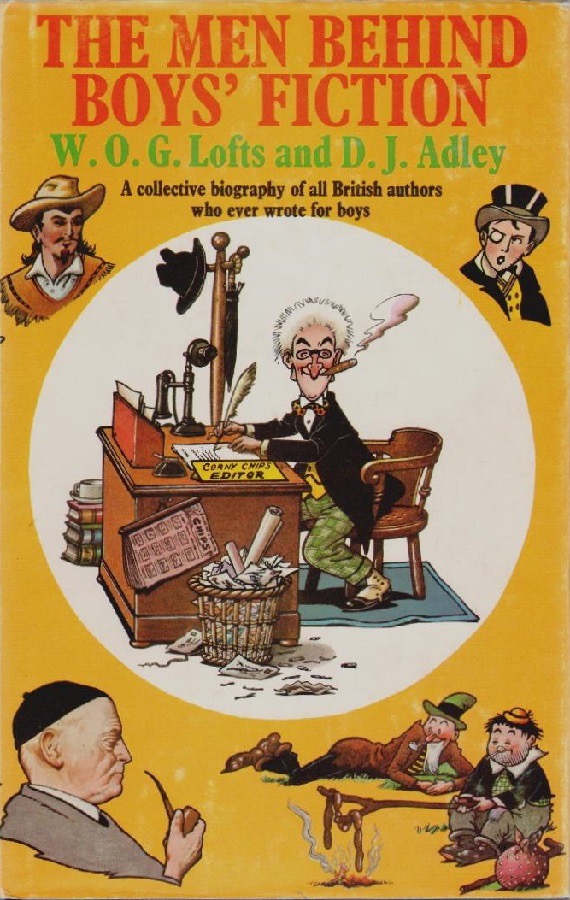 The Men Behind Boys’ Fiction
The Men Behind Boys’ Fiction
By W O G Lofts and D J Adley
An encyclopedia of all the data that this pair of comic fans had discovered from the 1890s up to 1969 about the Boys’ Fiction Papers. This is definitely a dip into book that you will go to for specific information. While it will not be the definitive listing of every single writer during that period, it is certainly a very robust attempt to collate as much information as possible.
Alas, my copy of this book does not have the dust jacket, but as it is full of fascinating facts, I can live with that.
• Search for The Men Behind Boys’ Fiction on amazon.co.uk
Duncan McAlpine’s Comic Book Price Guides
These were created mainly for comic shop owners so they would have a rough idea of what comics were worth and were shamelessly US-centric, but there is still a wealth of information in the UK sections. I only have the 1996 version, but I can heartily recommend any one of the series as being worth picking up and now, of course, the Guide is published online on a subscription service
There is a wealth of material on some British comics that I have yet to find in there and the prices that was considered as a good price for some British comics at that time will make you weep.
• Visit the Comic Book Guide for Great Britain web site here: www.comicpriceguide.co.uk
 Web Sites
Web Sites
If you are collecting comics on a budget and you just want to know if the artist to a strip you enjoyed has done anything else, you don’t always want to or can afford to spend £30 on a reference book to just get one bit of data out of it. Here, the web offers many great resources on British comics.
Comics UK is the first site that I will point people in the direction of. It’s a forum of like minded people who all have a passion for British comics and you will finds fans of all types on there. Many people join as they have fuzzy memories of a strip from days gone by and most active members will do their bit to help. I, for one, always go there as I can never remember the artist that drew “Morgyn The Mighty” in the 1970s for the Victor (It was Antonio Garcia, by the way) and I know that I have that titbit of information on one of the threads in there.
Down The Tubes (you’re here already!) is the next one on my list and if you ever want to know what it is going on in UK comics today, this is your premiere resource. Run by comics editor and writer John Freeman, with features from Matt Badham, Jeremy Briggs, Tony Esmond, Moose Harris, myself, the late Roger Perry, Richard Sheaf, Owen Watts, Steve Winders and many “guests”, the site features many articles looking back on the history of British comics, along with dedicated sections on Action: The Sevenpenny Nightmare and the acclaimed World War One strip from Battle, “Charley’s War“, a section based on the work of the late Neil Emery. The articles covers a wide range of British comics be it pocket libraries, books produced by artists or even a map of your local comic shops (I wonder who keeps that up to date. Hmm…)
Bear Alley is the brainchild of Steve Holland and is my ultimate go to reference for anything to do with Amalgamated Press, Odhams, Fleetway or Egmont. Not only that, but Steve Holland has produced a number of useful reference books over the years. So, it is always nice to go and have a look at a few of them, sigh and then put the credit card away!
Blimey! It’s Another Blog About Comics is the site run by comic artist, writer and fan extraordinaire Lew Stringer (check out his work site here). Lew has been drawing for more years than he probably cares to admit and has been a comic fan since the … for even longer! His site truly is a smorgasbord of comic goodness ranging from Comic Cuts to Combat Colin and many stops in between. Lew’s site is a must visit on almost any British comic topic you care to name. Oh, and he draws Brickman too!
Barney is the computer that does all the drudgery in Mega-City One. And what better name could there be for the website that is the go to resource for all things 2000AD related? Do you want to know how many issues the first arc of “The Ballad of Halo Jones” ran for? Then this is the site to help you find it. At times, a bit clunky (and the database has been known to go occasionally squiffy), but the information is there and only requires a minimal amount of digging for the comic fan who needs to know who created Big Dave.
British Picture Libraries is an unassuming name for a website, but for any pocket library fan, this site is a must have. Vic Whittle carried out a task of herculean proportions when he set this site up in the early 2000s. He got hold of a copy of every single Commando ever printed, took a picture of the front cover and then placed it on the internet in issue order. He also listed every single title and has kept updating this valuable resource.
My profuse thanks goes to Vic for creating this site, as there is rarely a week goes by when I don’t go on this site to find some piece of information regarding Commando. My thanks also goes to DC Thomson for not shutting Vic down as I have heard horror stories about some companies being a tad heavy- handed when it comes to sites that look at their back catalogue.
Grand Comics Database is another site to add to your reference bookmarks. It is another internet-based organization of international volunteers dedicated to building a database covering all printed comics throughout the world. This is another useful piece of research for someone like myself as it allows me to build up comic knowledge at my own pace.
International Superheroes is a site that has not been updated for a couple of years, but is a wonderful site if you want to check out a specific hero. As the title indicates, it focuses on heroes and offers a short synopsis of the character, their publishing history and their powers. It’s not a site I go to as often as I used to, but every so often something pulls me in and I can while away an hour or so just looking at the different characters and seeing if I can recognise any of the art.
My Little Underground is the story of a comic fan made good. Glen Miller grew up in Glasgow in the 1970s and 1980s and went on to work in the comic retail industry and has many tales that will leave you in tears of laughter of the various antics that he has been either involved in or being witness to. In fact, Glen’s site provided much background information for me when I was researching my article on conventions in the UK.
The Topper Universe is one that I had as a favourite a while ago but as I transferred from one machine to the next, it was one that I had lost and I am so glad to find it again. This is a great piece of research breaking down the stories by the number of appearances and the issues that they appeared in. If you are researching a specific character, that last piece of information is absolute gold as it helps to narrow down your search to what boxes you need to check or which friends you have to annoy to borrow those issues.
The Victor incorporating The Hornet and Hotspur is another great research site. Created and run by Adrian Banfield since 2008, Adrian does an update each and every month and features a little bit more on each of these three staples of the D C Thomson’s boys’ comics output.
Colin Noble
